The Chinese Kitchen Cupboard
If you are a novice to Chinese cuisine or cooking Chinese food, this article provides an insight into the basic Chinese kitchen cupboard. There is a collection of ingredients that may be found in all Chinese kitchens. These ingredients are described in this article as well as examples on how they are typically used.
Light Soy Sauce
Soy sauce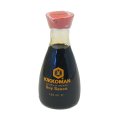 is an important Chinese condiment that is often used instead of salt. Light soy sauce is a thin sauce that is made from salting and fermenting soy beans. It comes in many grades and variations in flavour, which are a result of difference in the fermentation process. Light soys come from a short fermentation period, whilst darker soy sauces have been fermented for longer. Lower grades of soy are generally used for cooking, whilst higher grades are used for dipping, for example sushi.
is an important Chinese condiment that is often used instead of salt. Light soy sauce is a thin sauce that is made from salting and fermenting soy beans. It comes in many grades and variations in flavour, which are a result of difference in the fermentation process. Light soys come from a short fermentation period, whilst darker soy sauces have been fermented for longer. Lower grades of soy are generally used for cooking, whilst higher grades are used for dipping, for example sushi.
Dark Soy Sauce
Dark soy sauce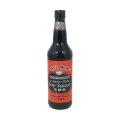 has a mellow flavour and is generally much sweeter and less salty than light soy. It is mainly used for the beautiful colour it imparts on food, although some cooks do not use it at all. To tell whether the bottle you have picked up contains light soy or dark soy, tilt the bottle so that the soy covers the clear part of the glass and straighten up again. With light soy, the glass will clear quite quickly, whilst dark soy will leave a more obvious tide mark.
has a mellow flavour and is generally much sweeter and less salty than light soy. It is mainly used for the beautiful colour it imparts on food, although some cooks do not use it at all. To tell whether the bottle you have picked up contains light soy or dark soy, tilt the bottle so that the soy covers the clear part of the glass and straighten up again. With light soy, the glass will clear quite quickly, whilst dark soy will leave a more obvious tide mark.
Oyster Sauce (or vegetarian equivalent)
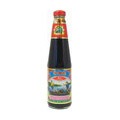 Yes; oyster sauce is made from oysters. The beautiful essence of oysters is consolidated into this sweet and salty thick sauce. It is quite simply enjoyed poured (sparingly) over blanched choi, or used to create the base of stir fry sauces. If you are a vegetarian, do not despair; vegetarian versions of this made from mushroom extracts also exist, sometimes called ‘Vegetarian Stir Fry Sauce’. We recommend this as a reasonable substitute for oyster sauce.
Yes; oyster sauce is made from oysters. The beautiful essence of oysters is consolidated into this sweet and salty thick sauce. It is quite simply enjoyed poured (sparingly) over blanched choi, or used to create the base of stir fry sauces. If you are a vegetarian, do not despair; vegetarian versions of this made from mushroom extracts also exist, sometimes called ‘Vegetarian Stir Fry Sauce’. We recommend this as a reasonable substitute for oyster sauce.
Rice
Rice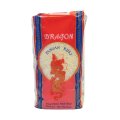 is the staple food of choice for many people, and it comes in many varieties. Rice strains differ by size and shape of grain, flavour and starchiness. Rices that contain more starch are glutinous, or sticky rices. In chinese cooking, sticky rice is commonly used to make tsong – a type of rice parcel wrapped in banana leaves and containing a mixture of pork, lentils and vegetables. Thai cuisine serves sticky rice as a dessert with fresh, aromatic mango and coconut milk.
is the staple food of choice for many people, and it comes in many varieties. Rice strains differ by size and shape of grain, flavour and starchiness. Rices that contain more starch are glutinous, or sticky rices. In chinese cooking, sticky rice is commonly used to make tsong – a type of rice parcel wrapped in banana leaves and containing a mixture of pork, lentils and vegetables. Thai cuisine serves sticky rice as a dessert with fresh, aromatic mango and coconut milk.
Noodles
Noodles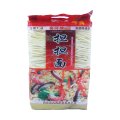 come in many varieties, all with different uses. Besides common egg noodles (which come in fine, medium and broad thicknesses), they may also be made with rice, sweet potatoes and green beans. Rice noodles include thin rice vermicelli and ho fun (similar to pho in Thai cooking), both of which are used for noodle soup and stir frying. Instant noodles are also very popular in Oriental kitchens!
come in many varieties, all with different uses. Besides common egg noodles (which come in fine, medium and broad thicknesses), they may also be made with rice, sweet potatoes and green beans. Rice noodles include thin rice vermicelli and ho fun (similar to pho in Thai cooking), both of which are used for noodle soup and stir frying. Instant noodles are also very popular in Oriental kitchens!
Sesame Oil
Sesame oil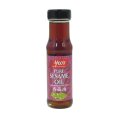 is used purely for flavouring. It is not recommended that it be used for frying foods as it generally burns easily. Adding a few drops to a bowl of steaming ramen or a dish of stir fried choi can add a wonderful and rich aroma with minimum effort. Sesame oil is usually used in conjunction with soy sauce, the perfect partnership of salty and aromatic flavours. Try adding a few drops to your dipping soy next time you enjoy dim sum dumplings at home!
is used purely for flavouring. It is not recommended that it be used for frying foods as it generally burns easily. Adding a few drops to a bowl of steaming ramen or a dish of stir fried choi can add a wonderful and rich aroma with minimum effort. Sesame oil is usually used in conjunction with soy sauce, the perfect partnership of salty and aromatic flavours. Try adding a few drops to your dipping soy next time you enjoy dim sum dumplings at home!
Corn Starch (Corn Flour)
Corn starch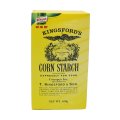 is a useful ingredient for thickening sauces or adding to meat before cooking to give it a silky mouth-feel. The most important thing to note when using corn starch is to never add it directly to your sauce in the pan. To do so will cause your sauce to go lumpy. For a lump-free sauce, mix the corn starch with a small amount of cold water and add the mixture to your sauce, whilst constantly stirring.
is a useful ingredient for thickening sauces or adding to meat before cooking to give it a silky mouth-feel. The most important thing to note when using corn starch is to never add it directly to your sauce in the pan. To do so will cause your sauce to go lumpy. For a lump-free sauce, mix the corn starch with a small amount of cold water and add the mixture to your sauce, whilst constantly stirring.
Rice Wine (Shao Hsing Wine)
Rice wine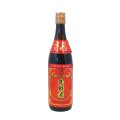 is used in many Chinese dishes, adding a distinct flavour to sauces and marinades. It is commonly combined with soy sauce, vegetable oil, corn starch and sugar as a marinade for meat before adding to soups and stir fries. Rice wine may be substituted in recipes with a dry sherry, should it not be available.
is used in many Chinese dishes, adding a distinct flavour to sauces and marinades. It is commonly combined with soy sauce, vegetable oil, corn starch and sugar as a marinade for meat before adding to soups and stir fries. Rice wine may be substituted in recipes with a dry sherry, should it not be available.
Peanut Oil (Ground Nut Oil)
Peanut oil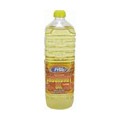 is a favourite oil amongst chefs as it is flavourless and has a high smoking point, which allows frying to occur at higher temperatures. It is used in the same manner as any cooking oil, but is favoured for deep fat frying.
is a favourite oil amongst chefs as it is flavourless and has a high smoking point, which allows frying to occur at higher temperatures. It is used in the same manner as any cooking oil, but is favoured for deep fat frying.
Chilli Oil
Chilli Oil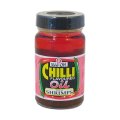 is similar to sesame oil in that it is generally used for flavouring; not for frying. Typically, chilli oils will not only contain chillis, but dried shrimps too. These add to the depth of the flavour and are eaten with your food. Often a sauce dish of chilli oil will be automatically spooned out to accompany a meal, with everyone clamouring to spoon some onto their own food. It is treated as an at-table condiment and has only recently begun to be added to food in the kitchen.
is similar to sesame oil in that it is generally used for flavouring; not for frying. Typically, chilli oils will not only contain chillis, but dried shrimps too. These add to the depth of the flavour and are eaten with your food. Often a sauce dish of chilli oil will be automatically spooned out to accompany a meal, with everyone clamouring to spoon some onto their own food. It is treated as an at-table condiment and has only recently begun to be added to food in the kitchen.
